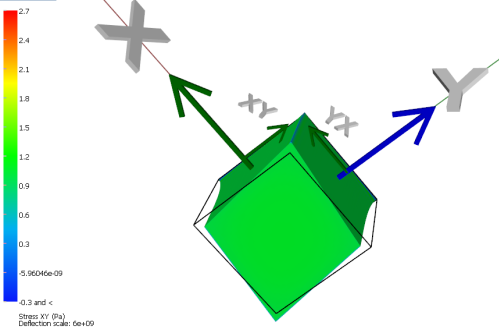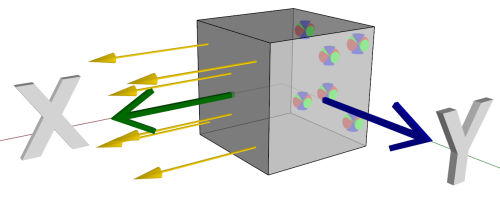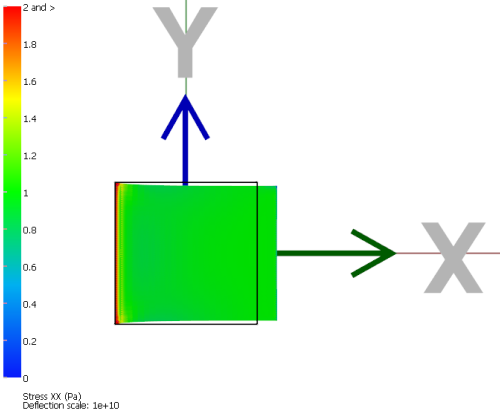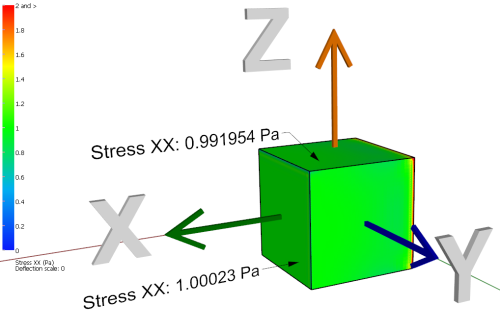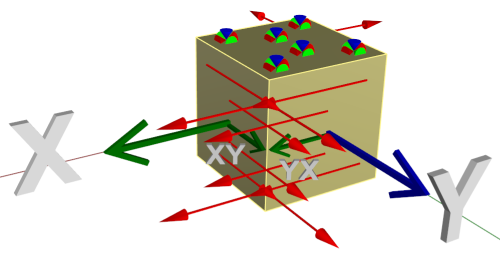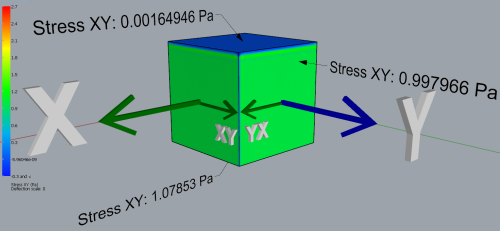Table of Contents
Stress Components
Scan&Solve can display all general stress components. Checking the component stresses can be a way to verify that the correct boundary conditions were applied to the model. Viewing the individual stress components can also provide insight on the cause of a high danger level in a particular region.
This page illustrates the component stress states by modeling some basic loading cases. Using mechanics of materials, solutions for stress problems arise from the use of a differential stress element. The model below is meant to show the standard notation for component stresses, and the differential element is modeled as a 1m cube.
Scan&Solve computes the component stresses from the calculated displacements using linear elasticity. The stresses are oriented to the model's global coordinate system.
General Stress Components
The first letter of the stress component refers to the face of the element the stress is acting on, and the second letters refers to the direction of action. For example, Stress XY refers to the shear stress acting in the Y direction on the X face of the element. Stress XX is the normal stress acting on the X face in the X direction, and can be referred to as just Stress X.
For a differential stress element, the shear stress components acting on intersecting faces have the same magnitude. Stress XY must equal Stress YX, and Scan&Solve consolidates these options in the component menu. The normal stress and shear stress components are illustrated on the model below.
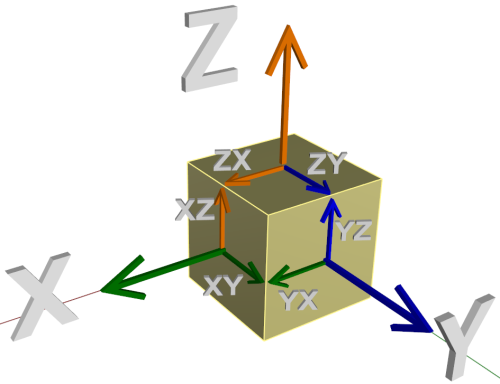
Axial Tension Loading
This load case illustrates Scan&Solve's display of the normal stress component Stress XX. The X element face is loaded with a 1 N distributed force, which corresponds to an axial tensile stress of 1 Pa. The opposite X element face is restrained in the X, Y, and Z directions.
The deformation of the model is shown below. Note that the 1 Pa Stress XX value is uniform across the model.
Shear Loading
Shear stresses act parallel to the corresponding face of the differential stress element. The static equilibrium loading for an element loaded only in Shear XY and YX is shown below. A 1 N force is applied parallel to each face, which creates a 1 Pa shear stress in the directions shown.
Even though the loading of the model results in static equilibrium, the model must still be restrained in the X, Y, and Z direction in some way. The Z direction face of the model was chosen to be restrained. Because the loading itself satisfies static equilibrium, there should be no shear stress acting on the restrained boundary.
As expected, the Stress XY component on the Z face is close to zero. In addition, the Stress XY components on all faces except the top is 1 Pa.
Note the shape of deformation of the model. For pure shear stress, the unrestrained, unloaded face of the model becomes squished into a parallelogram.
